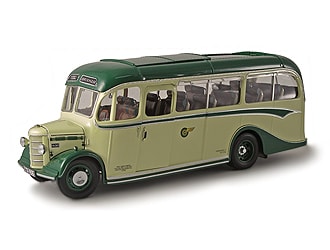
BEDFORD Bus Manual PDF


Bedford Bus & Coach History
There is a BEDFORD Bus Manual PDF above this page.
Cars «Bedford» belong to the most famous English trucks and buses, although neither in appearance nor in originality of design, they never stood out among all other cars. In practice, these were universal and unpretentious workhorses, which could be found in any part of the British Isles and the whole world.
The first years of existence of the Bedford brand are connected with the well-known machine building and iron foundry company Vauxhall, founded in the middle of last century in the Vauxhall quarter in London. In 1905, she moved to the city of Luton, County Bedfordshire, where she began to produce cars. In difficult for the firm 20-ies. the American concern GM, who long ago intended to create a bridgehead in the UK to invade the European market, became interested in Vauxhall and in 1925 made it its British branch. The plans for securing the European market also covered the truck sector. Activities in this direction began with the import of Chevrolet trucks to the UK, and in the late 1920s. At the plant in Hendon, their assembly began.
In 1931, the American leadership decided to deploy in the country its own production of light trucks, adapted to the requirements of the British market. Their brand became Bedford - by the name of the neighboring town and the whole county where the plant was located. The new production became the cargo department of Vauxhall. The reliable and high-speed machines of Bedford were a great success and soon became popular on all types of transportation.
The first appeared 2-ton machines WHG and WLG with a wheelbase of 3330 and 3990 mm. respectively, costing extremely cheap - only 198 pounds sterling; followed by the release of light vans VY and VX, a 1.5-ton WS series and 3-ton WT trucks. They installed a 6-cylinder upper valve petrol engine (3177 cm3, 44 hp, for the WT series - 64 hp), a rare at that time in Europe 4-speed synchronized transmission.
The first Bedford car of its own design became in 1934 a light van BYC with a load capacity of 600 kg., Recognized by contemporaries as the best delivery vehicle of its class.
Have not yet had time to deploy a mass production of cars, as it was urgently needed to remodel them into army versions. The main was a series of "O", on the basis of which trucks were produced models OXD, OYD and OWS with a payload of 1.5-5 tons, which received a specific flat front cover, which became their unique identification mark. The most famous military version of the "M" series was a light pick-up MWD with a carrying capacity of 750 kg. Since 1941, Bedford has produced a 3-ton QLD (4x4) model with a cab above the engine and an 8-speed transmission.
At the end of the war, the civilian vehicles of pre-war development began to go off the Bedford conveyors again.
In 1966 Bedford introduced for the first time in its program heavy machines of the KM series with a total weight of up to 24 tons with a new diesel engine with a power of 143 hp. Two years later, a version with a wheel formula 6x2 appeared, and in 1972 - a truck tractor for working as a part of the trains of a gross mass of 32 tons. By this time, the design of British cars was increasingly felt the influence of internal cooperation among members of the GM concern, including the European branch Opel and partly owned by the Japanese firm Isuzu.
In parallel, the improvement of light trucks continued. In 1964, on the basis of popular small cars Vauxhall Viva began the production of vans and pickups "ON" with a carrying capacity of 300-500 kg. In 1969, a well-known series "SA" replaced the gamma "CF" with a payload of 900 kg to 1.75 tons. In the early 80's. there was a new series of "CF2" from four models with a gross mass of 2.3-3.5 tons with a load-bearing body, a side sliding door and a significantly modified design.
In 1980, the TL series was added to the TK series, which was distinguished by a more rigorous design and application of the flip top over the engine. In 1986, the most powerful representative of this range - the three-axle dumper TL2440 (6x4) with a gross weight of 24 tons - became one of the last cars bearing the brand "Bedford". But, despite the economic backwardness of Great Britain, by the year 1980 the position of Bedford remained quite prosperous. On his account, there were already 2 million trucks produced and 1 million different vans. Up to 70% of all products were exported to more than 100 countries. Bedford remained one of the leading manufacturers of trucks in the country.
In 1986, I had to take a painful decision to leave Bedford from the heavy truck market. In November 1987, the factory in Dunstable, together with the rights to the produced range of trucks, bought the firm "All Wheel Drive Ltd". She managed to continue the production of 2- and 3-axis machines of the series "TL" and "TM" under the brand name "AWD" for only 6 years, after which she went bankrupt. In 1992, the Bedford brand was revived by the engineering group Marshall from Cambridge, which made truck production its new branch.
Look also - DENNIS Coach Manuals PDF.
